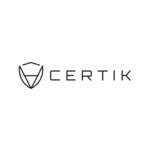DUBLIN--(BUSINESS WIRE)--The "Autonomous Driving Simulation Industry Chain Report, 2020-2021 (I)" report has been added to ResearchAndMarkets.com's offering.
Autonomous Driving Simulation Research: Foreign giants build closed-loop simulation platforms, while domestic companies focus on the construction of scenario library
In the development of high-level autonomous driving, the importance of simulation testing becomes more and more apparent. From 2020 to 2021, both foreign and domestic companies stepped up the layout in the field of autonomous driving simulation.
In the transition from industrial simulation to autonomous driving simulation, giants such as Ansys and Siemens have established various modules of autonomous driving simulation through continuous acquisition, cooperation and technological development, strengthened the closed-loop of the simulation platform, and built industrial barriers. At present, the layout of foreign leading companies has covered more than 80% of the simulation sector, and which is continuously updated.
From 2020 to 2021, top foreign simulation companies updated and optimized the following sectors:
More sensor models such as camera, radar, LiDAR, etc. are supported
Ansys: unified simulation with the addition of camera, LiDAR, and radar
On January 7, 2020, FLIR Systems, Inc. and ANSYS were partnering to deliver superior hazard detection capabilities for assisted driving and autonomous vehicles (AVs) - empowering automakers to deliver unprecedented vehicle safety. Through this partnership, FLIR will integrate a fully physics-based thermal sensor into ANSYS' leading-edge driving simulator to model, test, and validate thermal camera designs within an ultra-realistic virtual world. The new solution will reduce OEM development time by optimizing thermal camera placement for use with tools such as automatic emergency braking (AEB), pedestrian detection, and within future AVs.
In January 2021, ANSYS 2021 R1 expanded sensor simulation capabilities with scanning and rotating lidar models to improve AV simulation reliability. At the same time, it used a new GPU to accelerate the radar simulation.
Siemens: addition of LiDAR simulation
In September 2020, Siemens partnered with XenomatiX to add a generic, physics-based LiDAR simulation model to its Simcenter Prescan software. The knowledge and expertise of XenomatiX' optical team together with its advanced, true solid-state, LiDAR technology, can enable Siemens to fine-tune its simulation model and validate it with real-life measurements from XenomatiX.
At present, the LiDAR model of Prescan can accurately describe all the optical properties (including surface shape, reflection characteristics, texture, and structure) of materials.
CARLA: upgrade of LiDAR sensor
In September 2020, CARLA 0.9.10 came with the trunk packed of improvements, with notable dedication to sensors. The LIDAR sensor was upgraded, and a brand-new semantic LiDAR sensor provides with much more information of the surroundings.
Expansion of Cloud Simulation
Cloud computing capabilities can support large-scale simulation, cover massive driving scenarios, achieve high-concurrency running tests, and accelerate simulation running speed. Therefore, massively parallel acceleration in the cloud is one of the necessary core capabilities of autonomous driving simulation test platforms. Currently, the autonomous driving industry generally chooses Microsoft Azure as the cloud simulation partner.
Generally speaking, Chinese companies are still fighting their own way in the construction of scenario libraries, facing problems such as inconsistent data on scenarios, difficulty in establishing an evaluation and certification system of autonomous driving simulation & test. Therefore, the establishment of scenario library standards has become one of the current concerns in the field of simulation.
Key Topics Covered:
1. Introduction to Autonomous Driving Simulation
1.1 Overview of Simulation Technology
1.2 Significance of Simulation Testing to Autonomous Driving R&D
1.3 Types of Autonomous Driving Simulation Technology
1.4 Composition of Autonomous Driving Simulation Software
1.5 International Autonomous Driving Simulation Standardization Organization
1.5.1 Introduction to ASAM
1.5.2 Dynamic of ASAM
1.5.3 C-ASAM Working Group
1.5.4 Standards and Roadmap of ASAM
1.5.5 ASAM's OpenX Series Standards
1.5.6 ASAM's New Standards for Advanced Autonomous Driving
1.6 Status Quo of China's Autonomous Driving Simulation Test Standards
1.6.1 National Autonomous Driving Road Test Standards
1.6.2 Provincial and Municipal Autonomous Driving Road Test Standards
1.7 Status Quo of China's Participation in the Development of International Standards for Autonomous Driving Test Scenarios
1.8 Autonomous Driving Simulation Layout of OEMs
2. Autonomous Driving Simulation Platforms and Companies
2.1 Typical Components of Integrated Simulation Platform
2.2 Overview of Simulation Software System
2.3 Comparison of Key Foreign Companies
2.4 Comparison of Key Domestic Enterprises
2.5 ANSYS
2.6 Siemens
2.7 NVIDIA
2.8 CARLA
2.9 AVSimulation
2.10 LGSVL
2.11 Panosim
2.12 AirSim
2.13 51World
2.14 Huawei
2.15 Baidu
2.16 Tencent
2.17 Alibaba
2.18 BATH Simulation Business Comparison
2.19 China Automotive Technology & Research Center (CATARC)
2.20 China Automotive Engineering Research Institute Co., Ltd. (CAERI)
2.21 Saimo
3. Vehicle Dynamics Simulation
3.1 Vehicle Dynamics Simulation
3.2 Vehicle Dynamics Enterprises
3.3 IPG Carmaker
3.3.1 IPG Automotive
3.3.2 CarMaker
3.3.3 Application of CarMaker in ADAS Development
3.3.4 Customers of CarMaker
3.3.5 CarMaker 9.0
3.3.6 Cooperation
3.4 Carsim
3.4.1 Kinetics Simulation Software: CarSim
3.4.2 Update of CarSim
3.5 AVL
3.5.1 Profile
3.5.2 AVL CRUISE
3.5.3 AVL Smart ADAS Analyzer
3.5.4 Cooperation
3.6 Simpack
3.6.1 Products
3.6.2 Automotive Application
3.6.3 Update of SIMPACK 2021X
3.7 TESIS DYNAware
3.7.1 TESIS and Products
3.7.2 TESIS DYNAware
3.7.3 Application Scenarios of DYNA4
3.7.4 Update of DYNA4 4.0
3.8 MATLAB/Simulink
3.8.1 Products
3.8.2 Automotive Solutions
3.8.3 Vehicle Dynamics Blockset
3.8.4 Automated Driving Toolbox
3.9 VI-Grade
3.9.1 Profile
3.9.2 VI-CarRealTime
3.9.3 DiM DYNAMIC Simulator
For more information about this report visit https://www.researchandmarkets.com/r/ad4x03
Contacts
ResearchAndMarkets.com
Laura Wood, Senior Press Manager
[email protected]
For E.S.T Office Hours Call 1-917-300-0470
For U.S./CAN Toll Free Call 1-800-526-8630
For GMT Office Hours Call +353-1-416-8900










